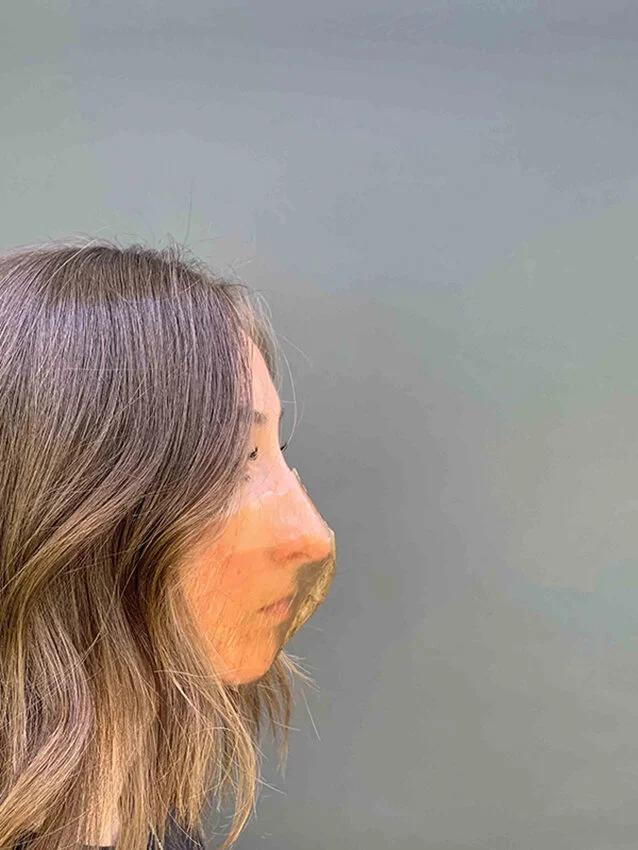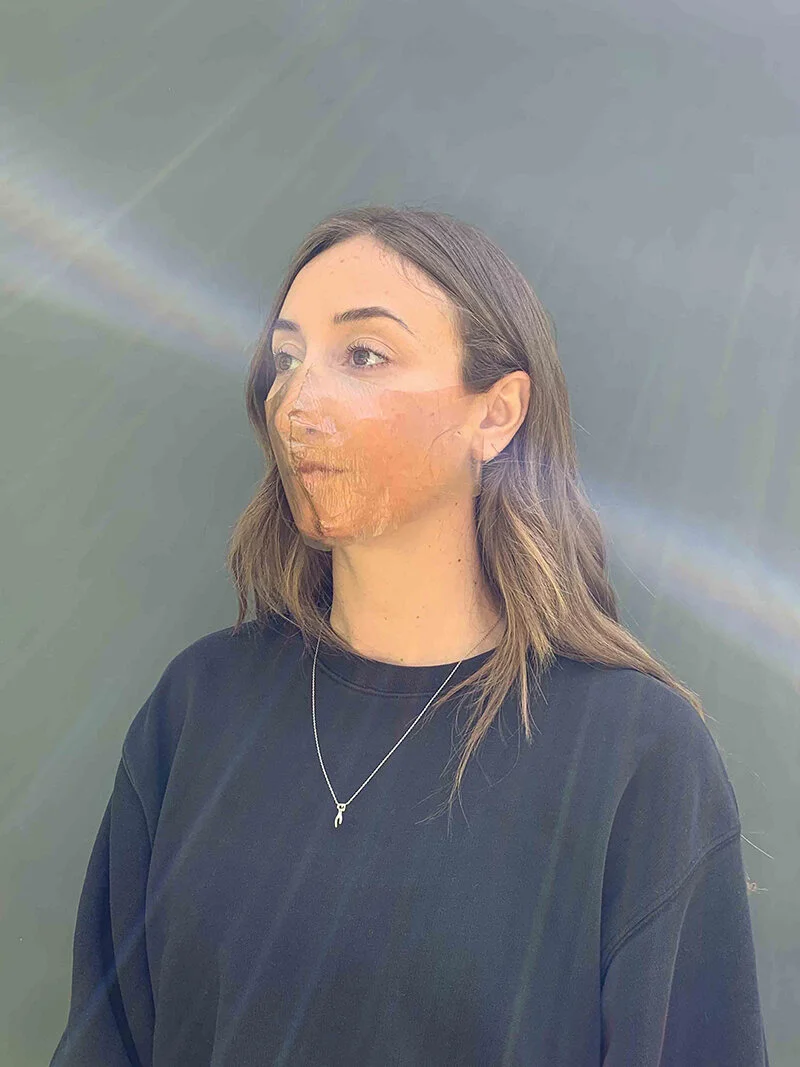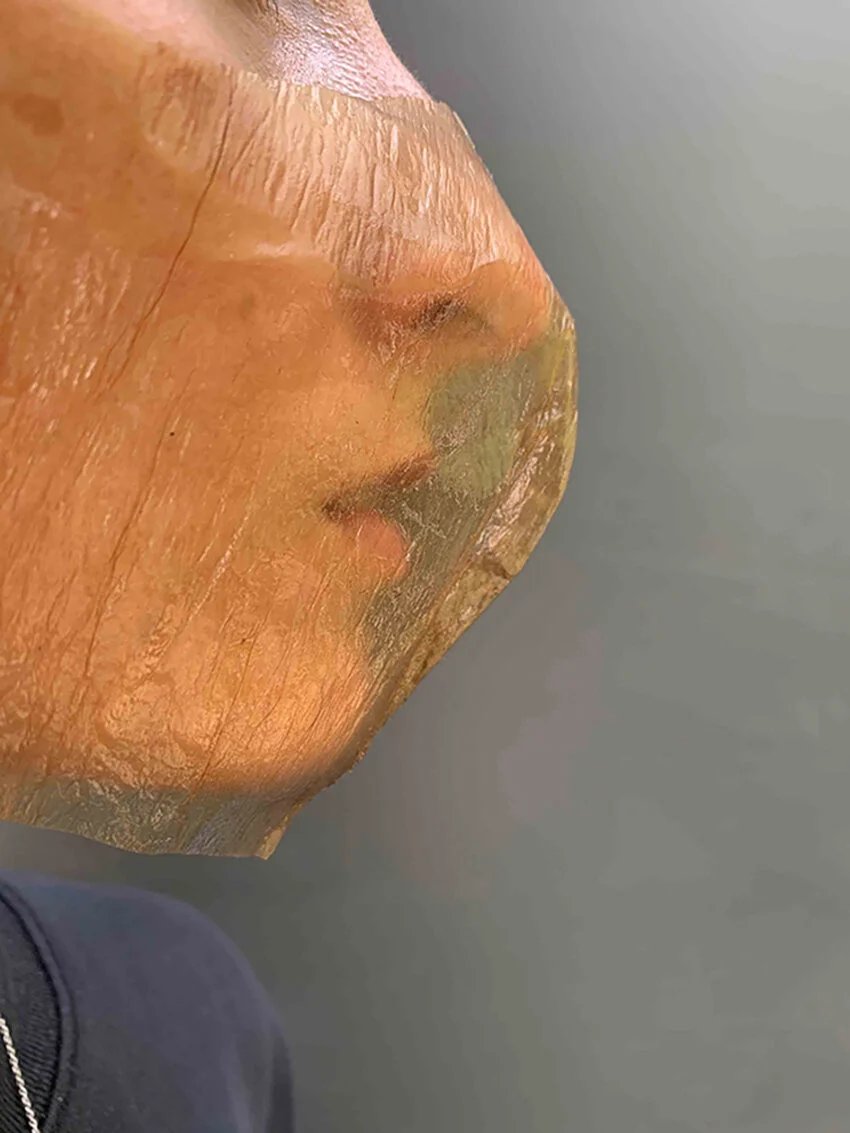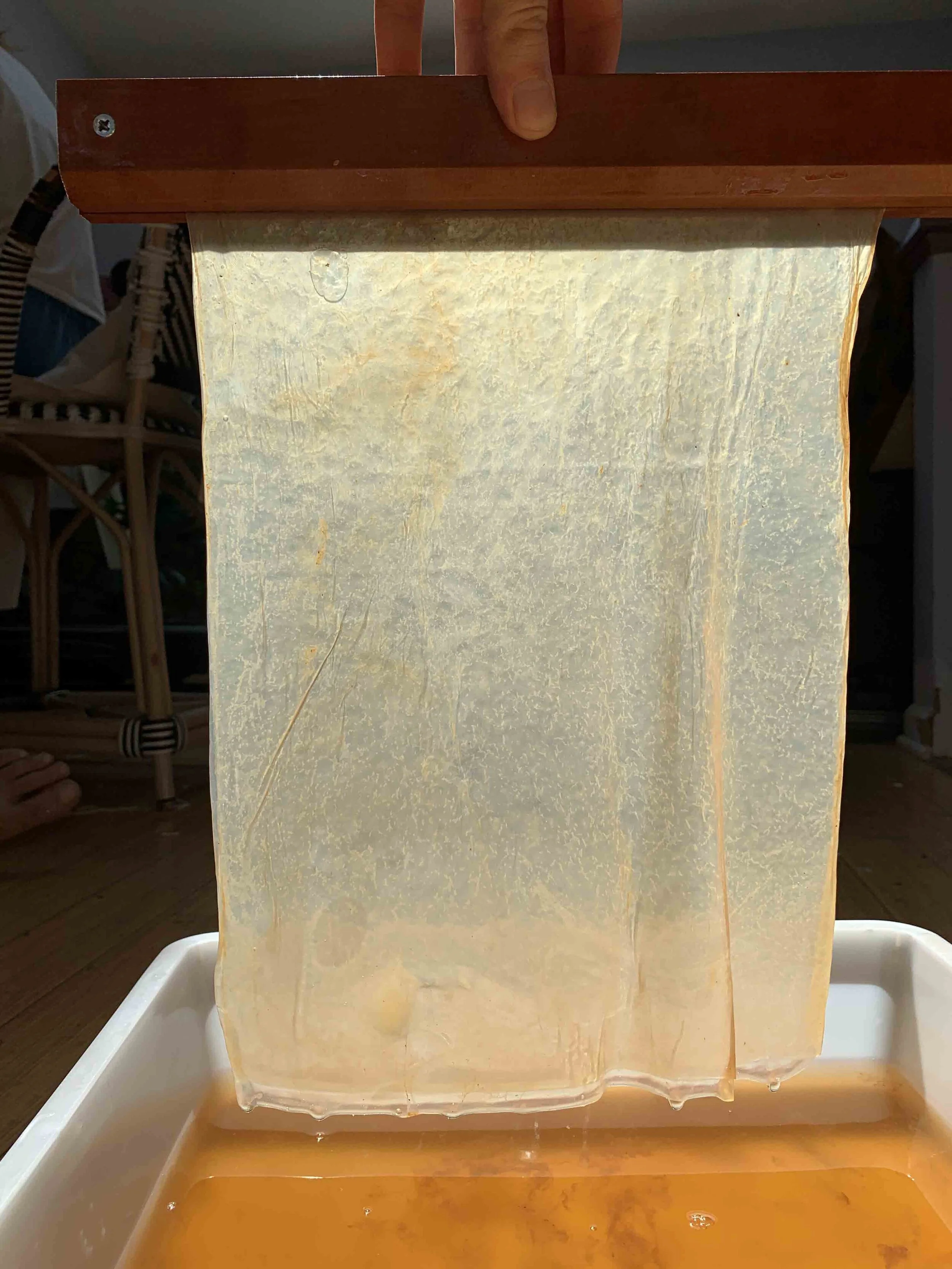Xylinum Mask
The creation of the first plastic saved an entire species from extinction in the name of billiards. A century and a half later, we have come to risk the loss of many more species, including our own, through petroleum plastic and fossil fuel dependence. As we are kept in our homes during the COVID-19 pandemic, our entire species halted by a natural being too small to see, there is no doubt that our future relies on moving forward with nature and not against it.
The first plastic was invented in 1869 by John Wesley Hyatt when the popularity of billiards created a demand for billiard balls that outpaced the supply of its source material, ivory from hunted wild elephants. Celluloid (and its more successful subsequent plastic, bakelite by Leo Baekeland), helped save elephant populations while also planting the first synthetic seeds toward a boom in plastic chemistry.
151 years later we find our own species spreading a lethal virus due in part, oddly enough, to a lack of a plastic-based material. N95 masks are made from melt blown non-woven plastic fabric at the perfect precision in order to filter particles containing pathogens. These materials are paramount in our fight to stop the spread of COVID-19, yet our essential workers are lacking supply of them. This is due to the machining and precision required to make the fabric. The machines that create melt blown fabrics are expensive, complex, and take months to build. Despite ramped up production and factories prepared to transition their time toward PPE fabrication, the supply chain of N95 Masks has bottlenecked severely.
As bio-designers, we often look at moments where synthetic chemistry hits a wall and ask ourselves if this bottleneck would have occurred in a world more invested in bio manufacturing. To follow our question, we grew our own bacterial cellulose face mask in our home quarantine kitchen while ideating some possible ways that this prototype could be grown to function just like the melt-blown N95 fabric that is in short supply.








Bacterial cellulose is created by a common bacteria, called xylinum acetobacter, on the surface of a liquid that they inhabit. This bacteria and it's cellulose craftwork can be grown with as little as water, tea, sugar, and a small sample to feed and let flourish. As the bacteria multiply, they knit cellulose fibers into a single membrane. Once the material is thick enough, it can be removed and hung to dry as a flat sheet. This sheet is flexible and strong, yet easily degrades into the environment. It can be waterproofed and oiled with natural ingredients to have a softness and strength of thin leather. The entire process takes around two weeks; long in its own right, but nothing compared to the geologic timescale of fossil fuels and their environmental cost. With multiple batches staggered in time, one could imagine the production of this material scaling quickly. Though translucent and smooth to the human eye, microscopic images show the tight web of cellulose fibers that make up this incredible knit.
The fibers that the bacteria weave are too tightly woven to easily breathe through, but there are existing methods that allow us to engineer around this to cater to individual material needs. In 2008, Virginia Tech Wake Forest Biomedical Engineers Paul Gatenholm and Rafael Davalos placed wax particles of a desired diameter on a bacterial cellulose growth surface. The bacteria were forced to knit around the wax particles creating custom sized microscopic holes after the wax was melted away. It is written that this method could be used to create a scaffold for growing bones and cartilage directly on the body instead of in a bioreactor. The two engineers have even gone so far as to dictate the bacterial growth using electricity.
Our prototype envisions employing the same technique to create a material with equivalent filtration to N95 masks, if not better. This material could be grown in local municipalities, in people's homes, or even within the very hospitals that need them to slash existing supply chain risks. Because the bacteria knit to the shape of the container they are in, products can be grown in specifically shaped molds so that the sheets fit standard specifications. With PPE like face masks made from cellulose, the life cycle of the product will match the user scenario by composting as easily as household vegetables after a single use. Thanks to the material’s translucency, expressions on the faces of those wearing these masks are clear, allowing them to better connect with others and have their lips read as if not wearing a mask at all.
Music by Ben Bondy. www.benbondy.com
